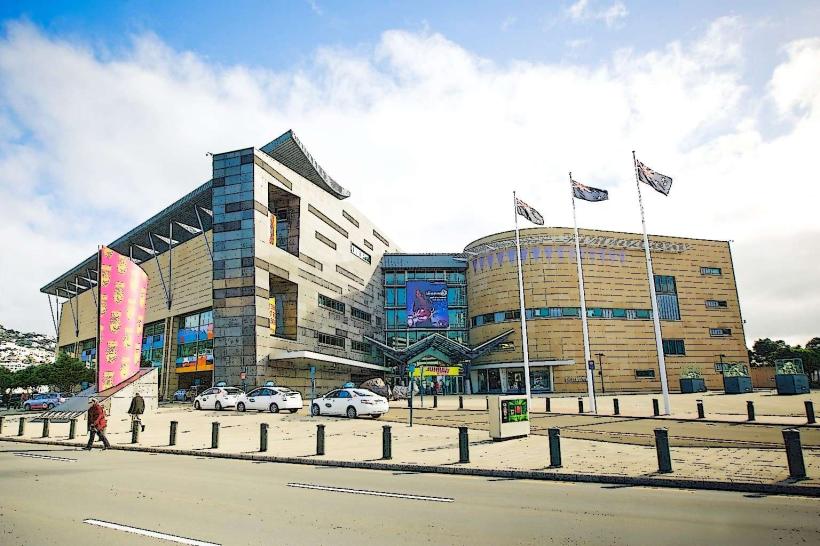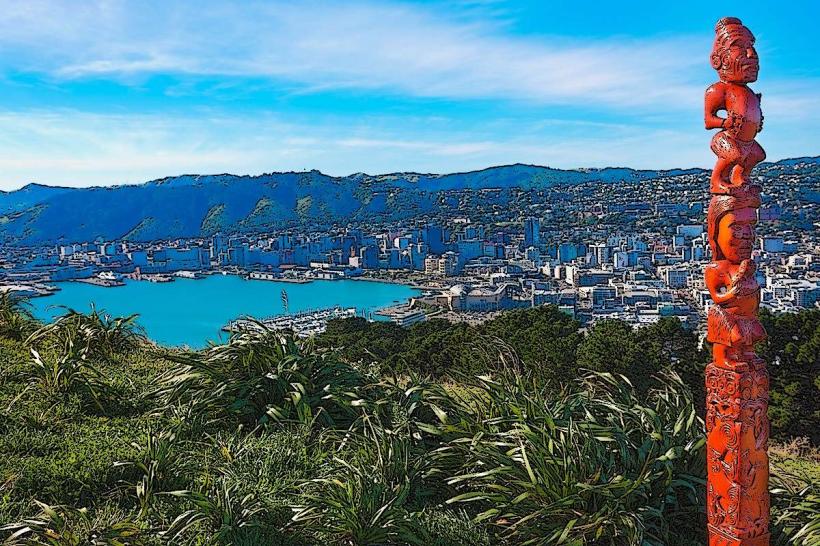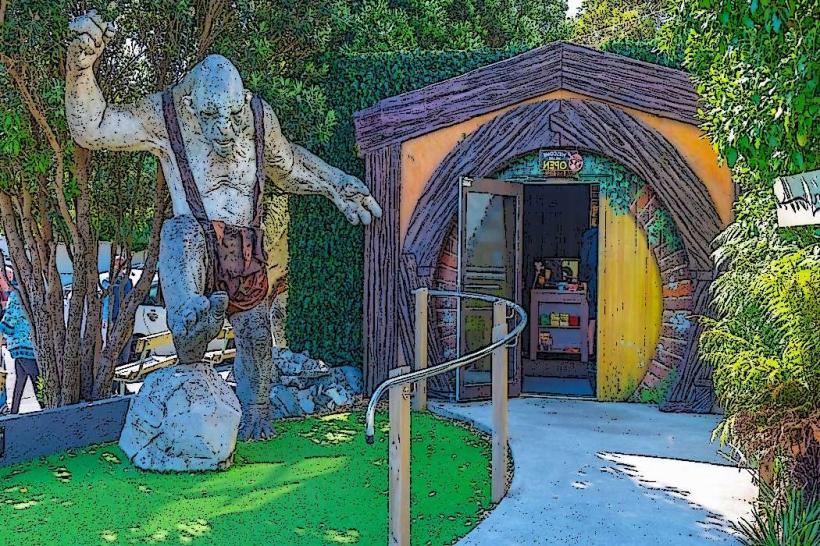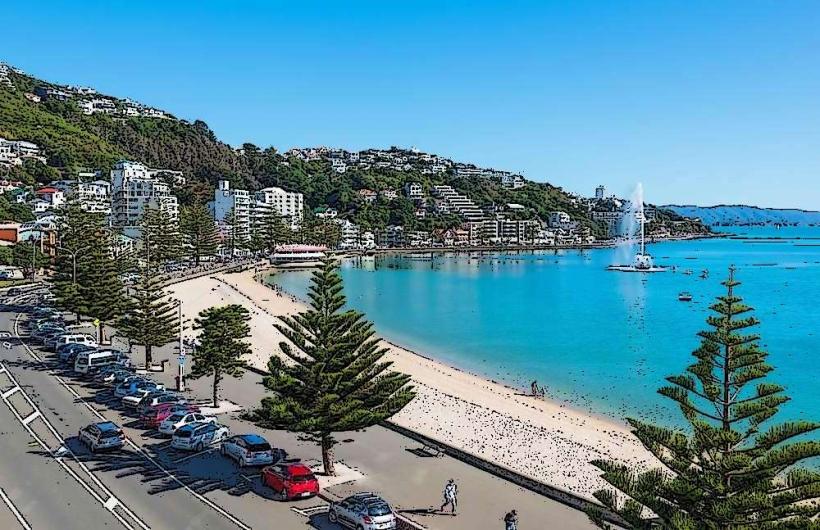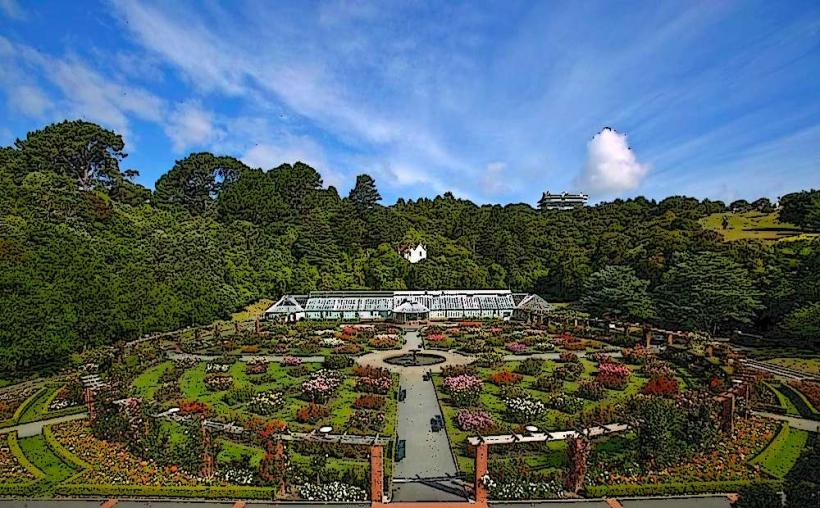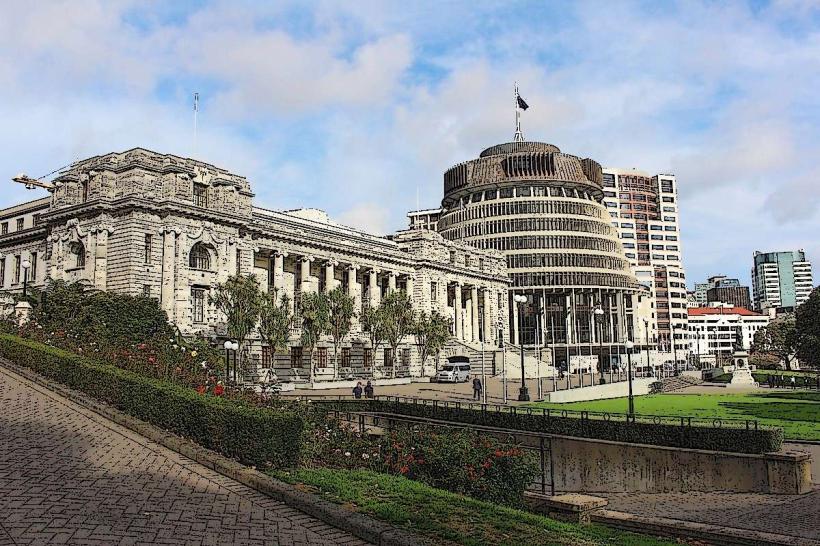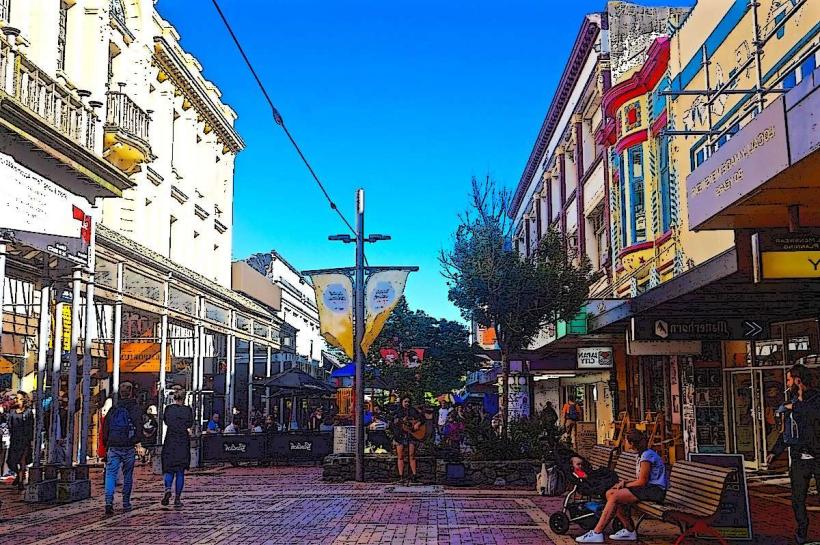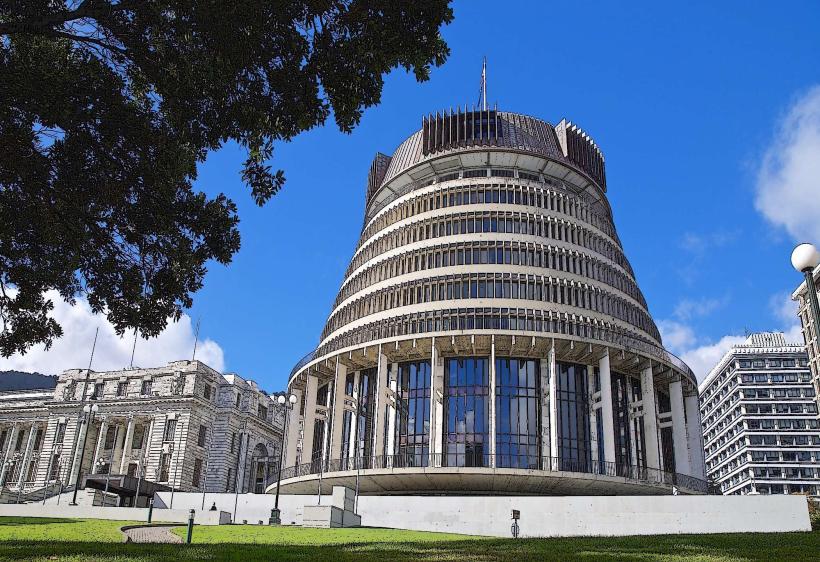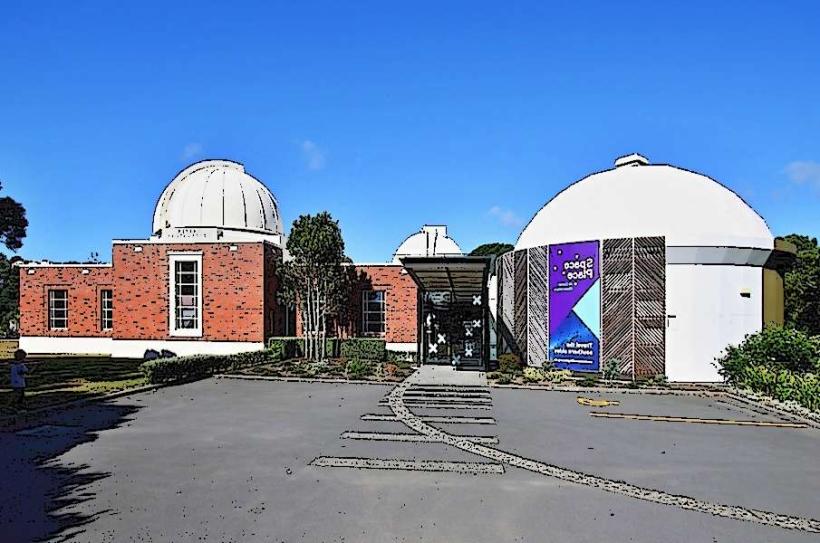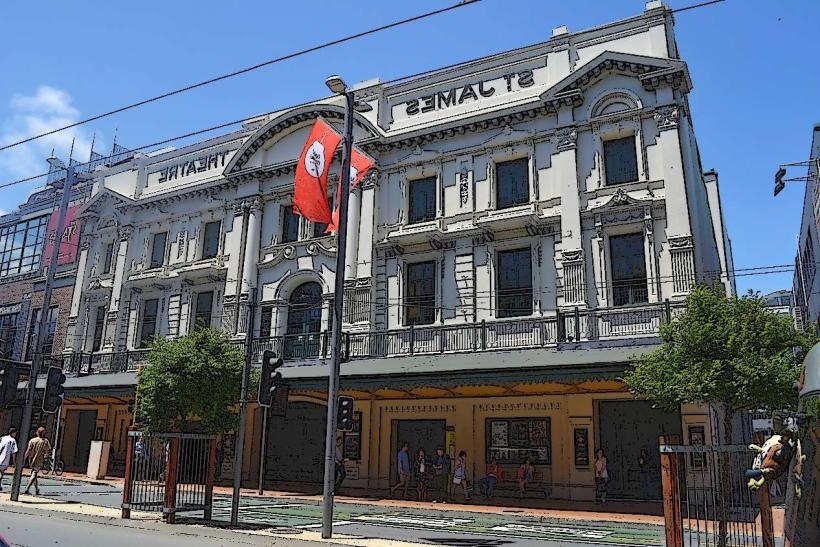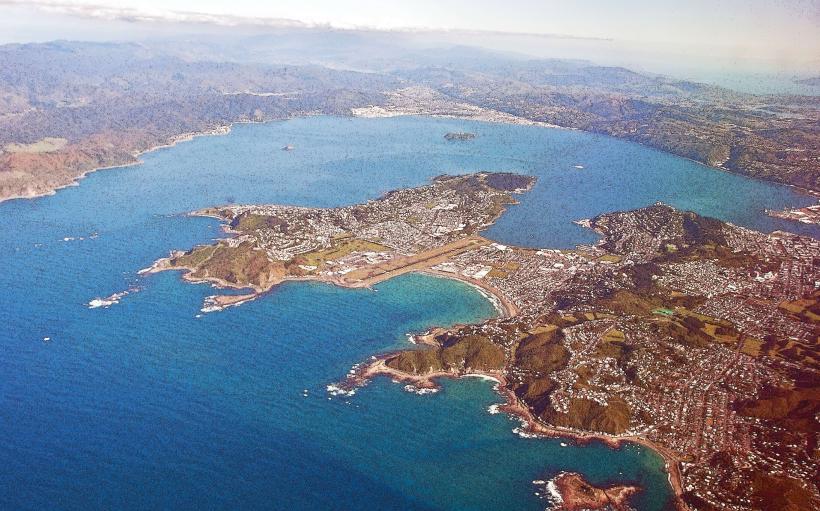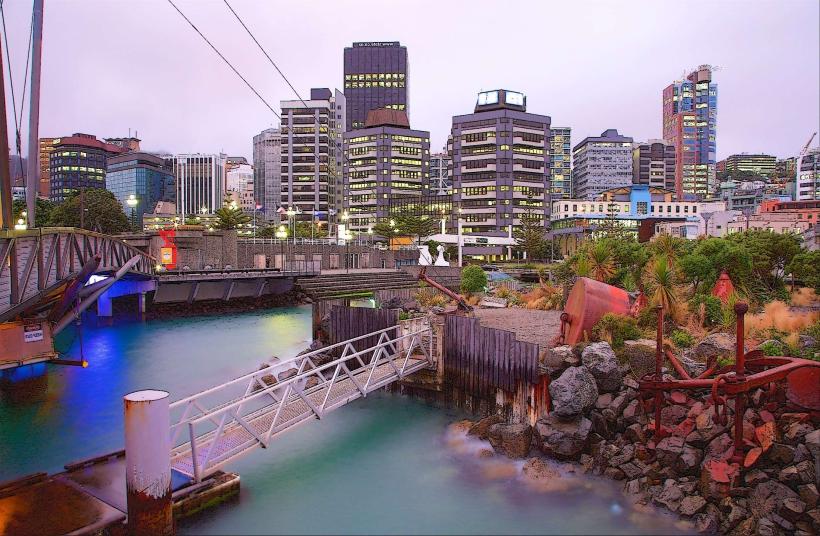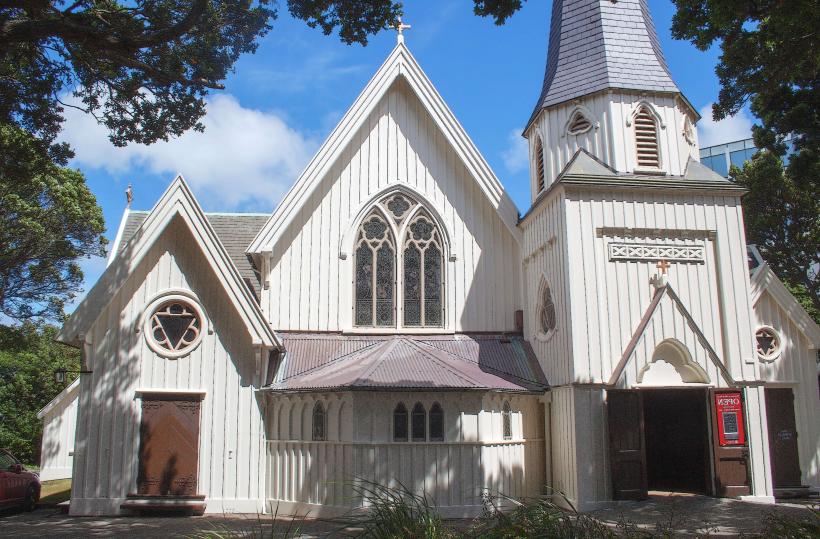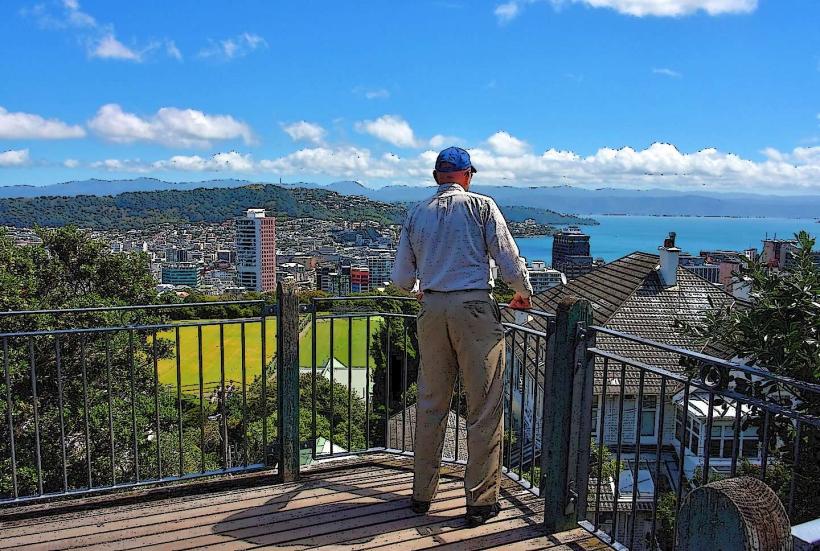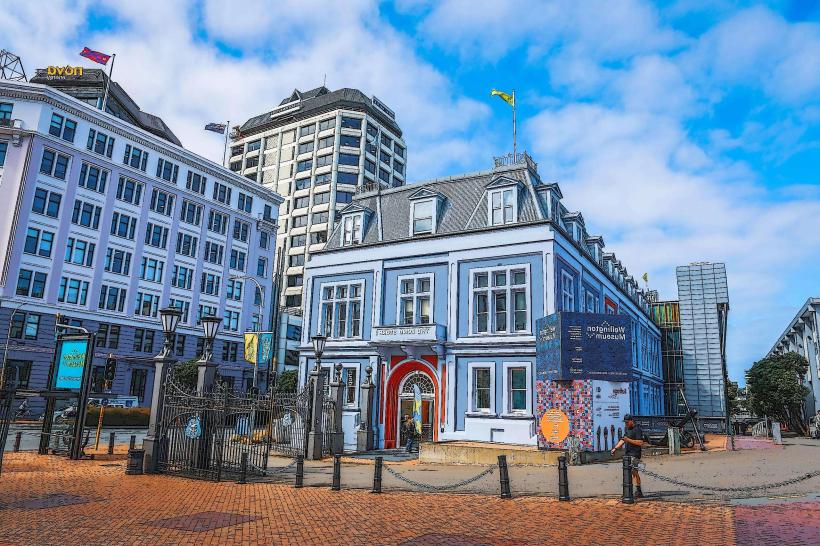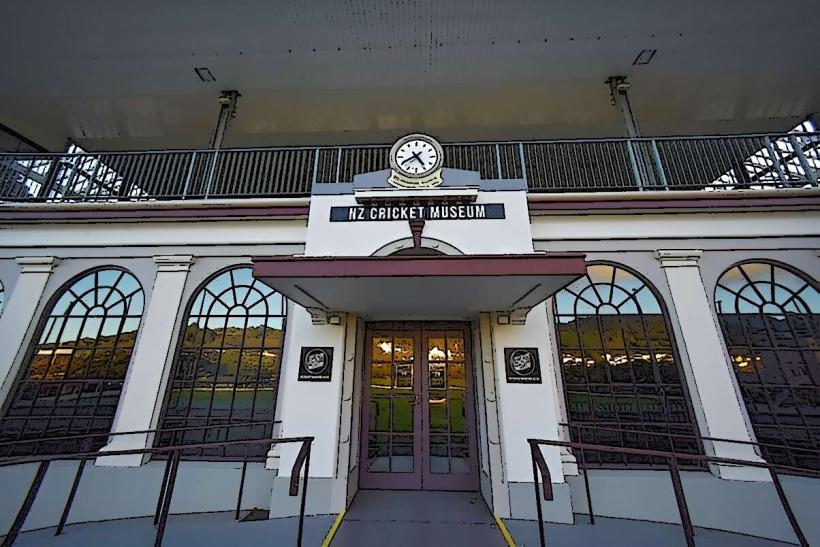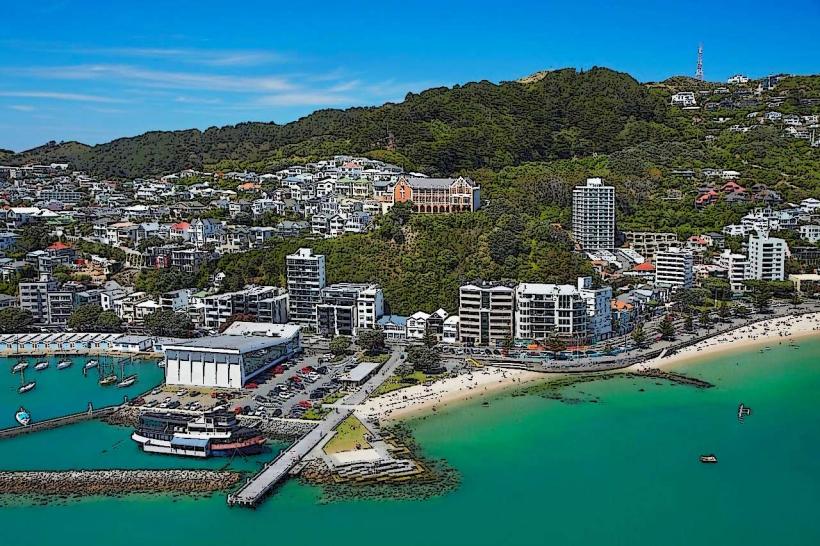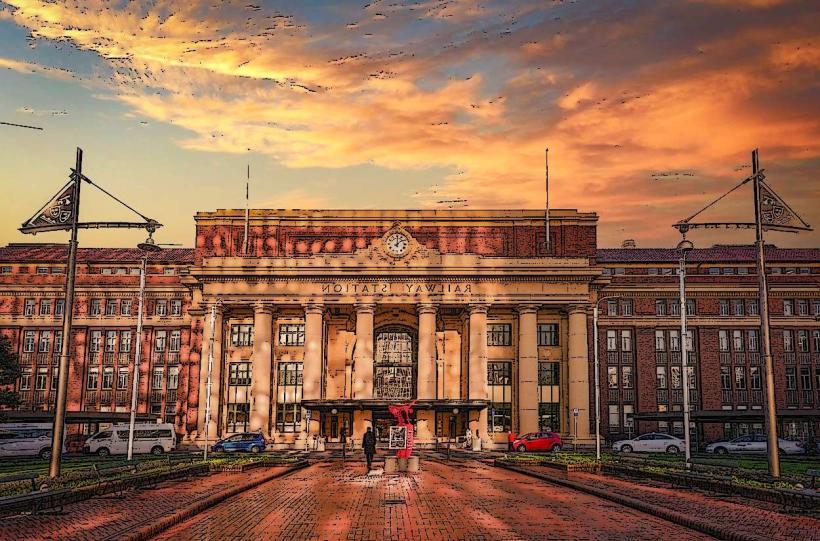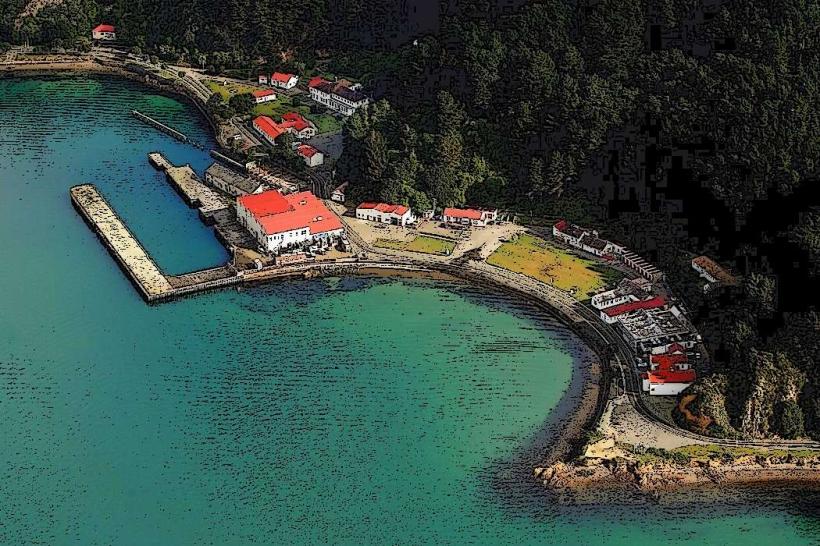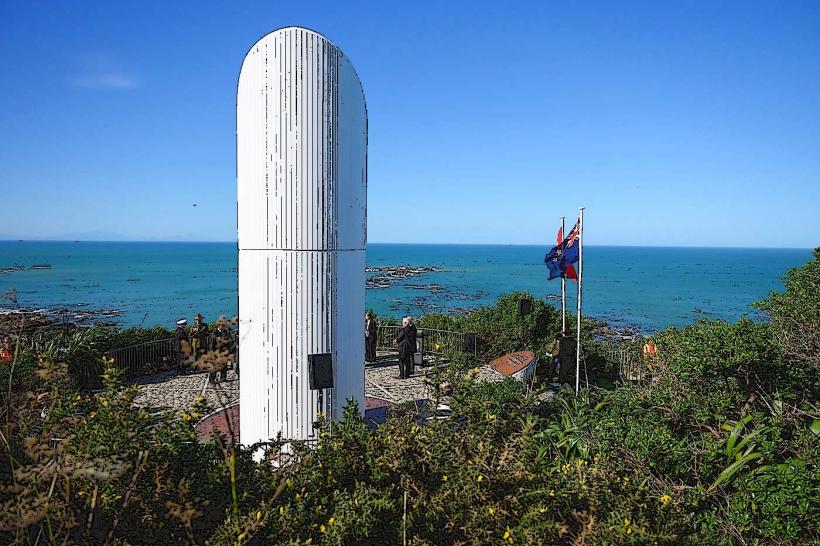Information
Landmark: Parliament BuildingsCity: Wellington
Country: New Zealand
Continent: Australia
The Parliament Buildings in Wellington are a significant landmark in New Zealand's political and historical landscape. Located in the heart of Wellington, these buildings house the New Zealand Parliament, where the country's laws are made, and the government functions. The area is home to a group of iconic structures, each with distinct architectural styles and historical importance. The buildings are not only central to New Zealand's democracy but also serve as a popular tourist attraction.
Key Features of the Parliament Buildings
1. The Beehive
The Beehive is the most distinctive and recognizable of the Parliament Buildings, known for its unique, circular design. It was completed in 1977 and houses the executive wing, where government ministers’ offices are located. The Beehive's unusual shape, with its modernist design, makes it one of the most iconic buildings in New Zealand.
- Architectural Design: Designed by Sir Sir Basil Spence, it features a multi-story, tiered design that is meant to resemble the layers of a beehive, symbolizing the efficiency and activity of the government.
- Functions: The Beehive hosts the offices of the Prime Minister and the Cabinet, and it also accommodates meeting rooms for government discussions.
- Tours: The Beehive is a central part of guided tours of Parliament, where visitors can explore its history, architecture, and significance in New Zealand's politics.
2. The Old Parliament Building
The Old Parliament Building, completed in 1907, is one of the oldest wooden buildings in the world, made entirely of Kauri wood. This historical building served as the main legislative building for New Zealand until the Beehive was built.
- Architecture: Designed in a classical style, the Old Parliament Building is a testament to New Zealand’s early colonial architecture, with grand columns and a central rotunda.
- Function: Today, the building is used for ceremonial purposes, public tours, and as a visitor center.
- Historical Significance: The Old Parliament Building has witnessed many significant events in New Zealand's political history, including the passage of landmark laws and the establishment of New Zealand’s parliamentary democracy.
3. The Parliamentary Library
The Parliamentary Library is another standout building located next to the Old Parliament Building. Completed in 1899, it serves as a major resource for MPs, researchers, and the public, housing a vast collection of books, journals, and official government documents.
- Design: The library is built in a Victorian Gothic style, with an intricate design that reflects the era’s architectural trends. The library is famous for its stunning stained-glass windows and dome, which provides ample light for readers inside.
- Functions: The Parliamentary Library supports New Zealand’s legislators by providing research services and in-depth information. It is a vital resource in shaping policy discussions.
- Tours: While not usually open to the public, tours of the library can be arranged as part of a wider Parliament tour.
4. The Grounds and Garden
The Parliament Grounds are beautifully maintained and feature lush lawns, flower beds, and trees, creating a peaceful atmosphere around the buildings. The grounds are open to the public and are an ideal place to relax while taking in views of the Parliamentary complex.
- Monuments and Sculptures: The gardens feature various statues and memorials dedicated to significant New Zealand political figures and moments in history.
- Flagpoles and Monumental Sculpture: The area surrounding the Parliament Buildings includes tall flagpoles that fly the national flag and other symbolic flags representing New Zealand’s heritage.
Visitor Experience
1. Parliament Tours
Visitors to the Parliament Buildings can take part in guided tours to learn about the history, architecture, and function of these important buildings. The tours are free and typically last between 30 to 45 minutes.
What’s Included in the Tour:
- The Beehive and its significant role in the government.
- The Old Parliament Building and its history.
- A look at the Parliamentary Library (when available).
- A chance to sit in the Debating Chamber and see where Parliamentarians gather to discuss and vote on laws.
Booking: While guided tours are free, booking is often recommended, especially during peak tourist seasons.
2. Public Access
- Debates and Parliamentary Sessions: Visitors can attend live debates and see the New Zealand Parliament in action. It’s an opportunity to witness political discussions, often on important national issues, in a real-world setting. The public can sit in the public galleries to watch the debates, which are held during the parliamentary year.
- Educational Programs: The Parliament Buildings also host educational programs, including school visits and workshops, that teach about New Zealand’s democratic processes and how government works.
3. Accessibility
- Location: The Parliament Buildings are located in central Wellington, making them easily accessible by foot, public transport, or car. It’s situated near Wellington’s waterfront, offering visitors the opportunity to explore other attractions in the city.
- Public Transport: The buildings are well-served by buses and are within walking distance from the Wellington Railway Station.
- Accessibility: The Parliament Buildings are wheelchair accessible, and the tour guides are trained to assist visitors with special needs.
4. Visitor Amenities
- Gift Shop: The Parliament Gift Shop offers a range of New Zealand-themed souvenirs, books, and government-related items, perfect for visitors interested in the country’s political history.
- Café: There is a cafeteria on-site where visitors can enjoy refreshments and meals while taking a break from their tour.
Significance of the Parliament Buildings
The Parliament Buildings in Wellington are not just architectural landmarks, they are symbols of New Zealand’s commitment to democracy, law, and governance. The Old Parliament Building reflects the country’s colonial past and the early days of its legislative process, while the Beehive represents modern New Zealand government in all its efficiency and innovation. Together, they provide a fascinating glimpse into the development of one of the world’s youngest parliamentary democracies.
For anyone visiting Wellington, a trip to the Parliament Buildings is both an educational and visually stimulating experience, offering insight into the workings of New Zealand's political system and the history behind its legislature.

